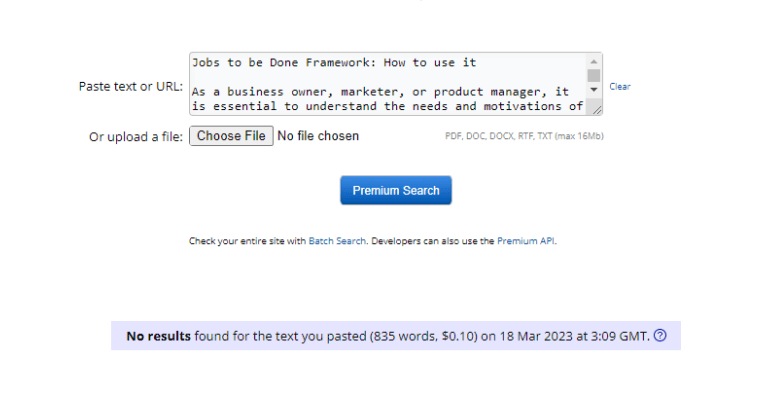As a business owner, marketer, or product manager, it is essential to understand the needs and motivations of your customers to develop successful products and services. The “Jobs to be Done” framework is a powerful tool that can help you achieve this. In this article, we will discuss what the Jobs to be Done framework is, how it works, and how to use it to develop successful products and services.
What is the Jobs to be Done framework?
The Jobs to be Done framework is a methodology that helps businesses understand the underlying reasons why customers buy their products or services. It is based on the idea that customers “hire” products or services to help them get a job done in their lives.
For example, a customer might “hire” a drill to help them hang a picture on the wall. In this case, the job to be done is not to buy a drill but to hang a picture on the wall. By understanding the job to be done, businesses can develop products and services that better meet their customers’ needs.
How does the Jobs to be Done framework work?
The Jobs to be Done framework involves four main steps:
- Identify the job to be done: The first step is to identify the job to be done. This involves understanding the customer’s underlying motivation for buying a product or service. For example, a customer might buy a lawnmower to keep their lawn neat and tidy.
- Understand the context: The next step is to understand the context in which the job is being done. This involves understanding the customer’s circumstances, such as their lifestyle, environment, and personal preferences. For example, a customer might prefer a lightweight lawnmower that is easy to push around their yard.
- Identify customer needs: The third step is to identify the customer’s needs. This involves understanding the specific features and benefits that the customer is looking for in a product or service. For example, a customer might need a lawnmower with a large cutting width to cover their yard quickly.
- Develop a solution: The final step is to develop a solution that meets the customer’s needs. This might involve developing a new product or service, modifying an existing product, or changing the way a product is marketed.
How to use the Jobs to be Done framework?
The Jobs to be Done framework can be used in various ways to develop successful products and services. Here are some steps that you can follow:
- Identify the customer’s job to be done: The first step is to identify the customer’s job to be done. This involves talking to customers and understanding their underlying motivations for buying your products or services.
- Create customer personas: Once you understand the customer’s job to be done, you can create customer personas that represent different segments of your customer base. This will help you to better understand their needs and preferences.
- Map out the customer journey: The next step is to map out the customer journey for each persona. This involves understanding the different touchpoints that customers have with your brand and identifying opportunities to improve their experience.
- Develop solutions: Based on your understanding of the customer’s job to be done, you can develop solutions that meet their needs. This might involve developing new products or services, modifying existing products, or changing the way you market your products.
- Test and iterate: Finally, it is essential to test and iterate your solutions to ensure that they meet your customer’s needs. This might involve conducting user research, gathering feedback from customers, and making changes based on their feedback.
Conclusion
The Jobs to be Done framework is a powerful tool that can help businesses better understand their customers’ needs and develop successful products and services. By understanding the customer’s job to be done, businesses can develop solutions that better meet their needs and improve their overall experience. By following the Jobs to be Done framework, businesses can also identify new opportunities for growth and innovation. By focusing on the underlying motivations of their customers, businesses can create products and services that solve their problems more effectively, differentiate themselves from competitors, and ultimately drive growth and profitability.
It is important to note that the Jobs to be Done framework is not a one-time process, but rather an ongoing process of understanding and meeting the changing needs of customers. By continually revisiting the customer’s job to be done, businesses can stay ahead of the curve and continue to deliver value to their customers.
In conclusion, the Jobs to be Done (JTBD) framework is a valuable tool for businesses of all sizes and industries. By understanding the underlying motivations of their customers, businesses can develop products and services that better meet their needs, differentiate themselves from competitors, and ultimately drive growth and profitability. By following the steps outlined above, businesses can start using the Jobs to be Done framework to develop successful products and services today.

The Diplomatic Insight is a digital and print magazine focusing on diplomacy, defense, and development publishing since 2009.







